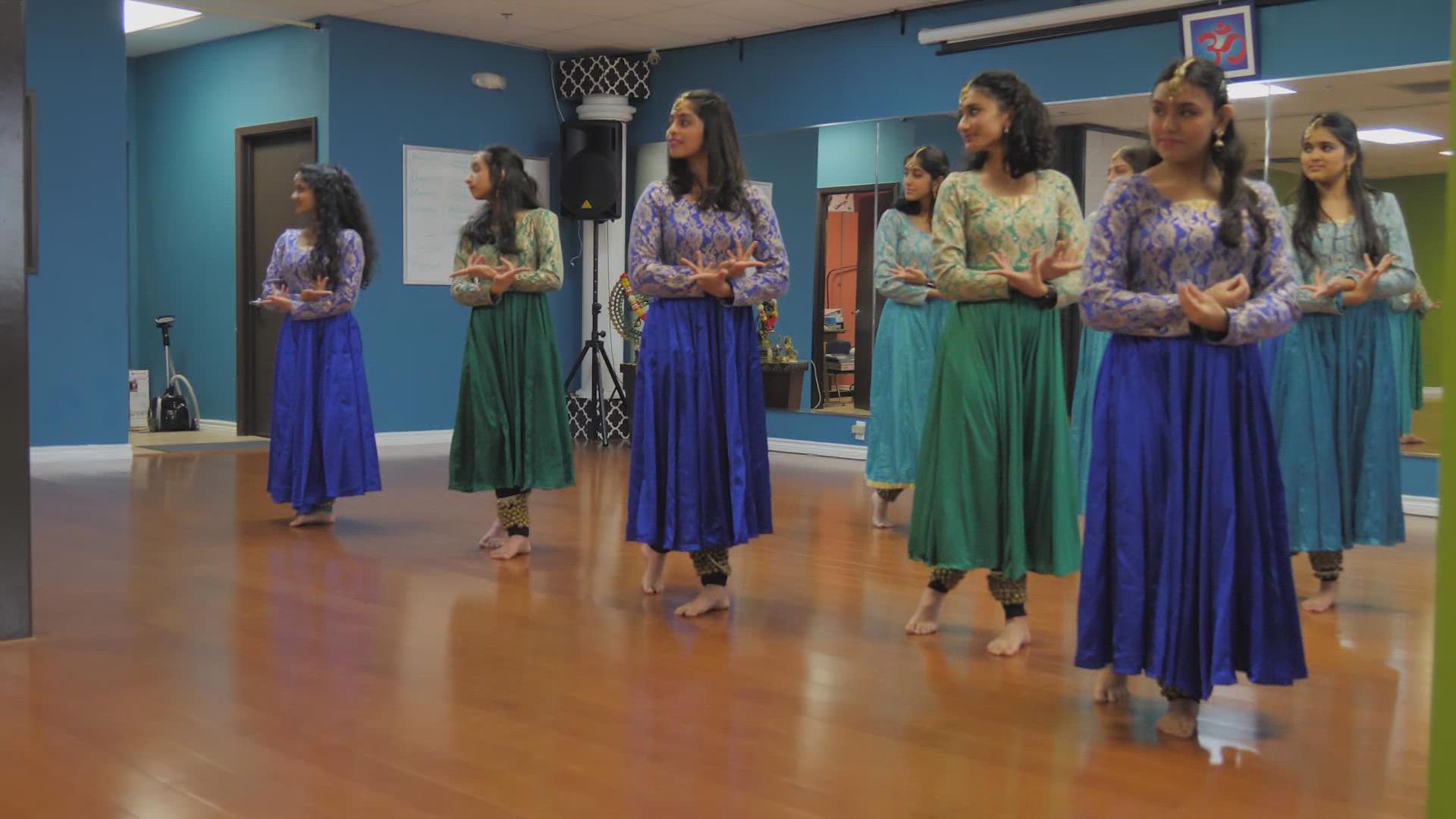PLANO, Texas — At Kathak Rhythms, a dance studio in Plano, every step the women are taking is a form of self-care.
“It's definitely given me a lot of confidence and confidence in my mental stamina and discipline,” said Isha Patel, from Lewisville.
It's also a form of Indian classical dance, that comes with years of practice.
“I was dancing from the age of probably six,” said Akhila Rao, who started Kathak Rhythms.
“When I came into Dallas, there was no Kathak,” said Akhila.
Bringing her love for dance from Bangalore, India to Plano.
“It's my passion. Turned into a profession as simple as that,” said Akhila.
But getting that passion started for Akhila was a struggle.
“When I moved here, I was on a H-4 visa and not on an independent visa, and I could not work,” said Akhila.
She kept the meaning of Kathak dance in mind, where it’s about dedication, and pushing through.
Since Akhila couldn’t work, she started teaching in 2002.
“My daughter is my biggest guinea pig,” said Akhila.
The dance clan started growing, where her daughter’s friends started learning with Akhila.
Little by little, she started saving money.
Nine years later, Akhila opened up this dance studio in the heart of Plano, where 400 women, including children and teenagers, attend.
“I’ve been doing it since I was 6 years old,” said Abha Shirolkar.
“It’s helped me develop as a person,” said 14-year-old Eshya Sayani.
The colorful garments, known as lehengas, the jewelry, and the bangles wrapped around their ankles help tell a story.
“A story about one of our gods we pray to, Krishna,” said Eshya.
“It’s called a gharanas, it’s basically representative of a thal in Kathak. It’s pure dance,” said Abha Shirolkar.
The history of Kathak can be traced back to the fourth century, B.C.
“Telling stories about Krishna, and other Hindu gods was how Kathak originated,” said Akhila.
“A beautiful description of Krishna, and how he holds the flute,” said Akhila.
The dance is now seen on Bollywood screens and Ted Talks.
In North Texas, these women worked hard at becoming pros, performing across the state.
“We have an auditorium full of 700 people, completely full, with no chair to sit, they watch for four to five hours, and we still have them at the end,” said Akhila.
A dance not only captivating the audience, but bringing many closer to their roots, thousands of miles away in India.

